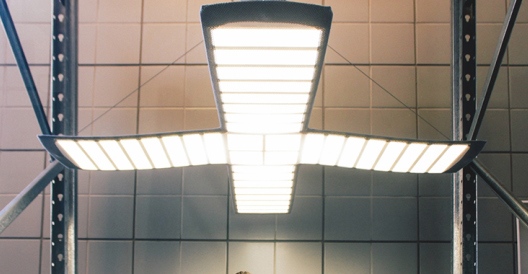Almost 140 years have passed since Thomas Edison invented the light bulb and swept aside the good old gas lamps and oil lanterns. While his invention at the time was accepted as a big breakthrough which would revolutionize the way people went about their lives, it is safe to say that he wouldn’t have been aware that his invention would spark a worldwide revolution in the way we use energy today.

Since then, scientists and engineers around the world have constantly been trying to improve the way we light our homes and offices and recent years have seen them concentrating their efforts of delivering lighting products that are both affordable and efficient.
OLED’s, for instance, are an emerging technology that delivers bright, thin and highly efficient light with great colour purity. OLED’s work by taking an organic material, such as small molecules or polymers, and sandwiching them between two electrodes.
Andy Zhou’s invention perhaps best illustrates the wonder that is the OLED technology. According to the news blog on CSIRO, Mr Zhou has created a flexible OLED luminaire, called Plus Pendant, as a final year project for his industrial design degree at Monash University. The pendant will be hitting the world stage next month as part of the Melbourne Movement stand at the Milan Design Festival.
Using 36 OLED panels the pendant shows off the technology’s razor thin profile and flexibility. The frame flexes up and down to change the characteristics of the light, ranging from an area light to a spot light. This unseen mechanism is achieved by clever use of magnets and tensile wiring.
CSIRO’s flexible electronics team is developing materials and processes to enable the low-cost production of flexible electronics technologies such as displays, lighting and solar cells. Their ultimate goal is to create new opportunities for manufacturing in Australia and overseas.
To see the Plus Pendant in action, visit: https://www.youtube.com/watch?v=7RfKlmXo2o0
The future looks bright, indeed.



















